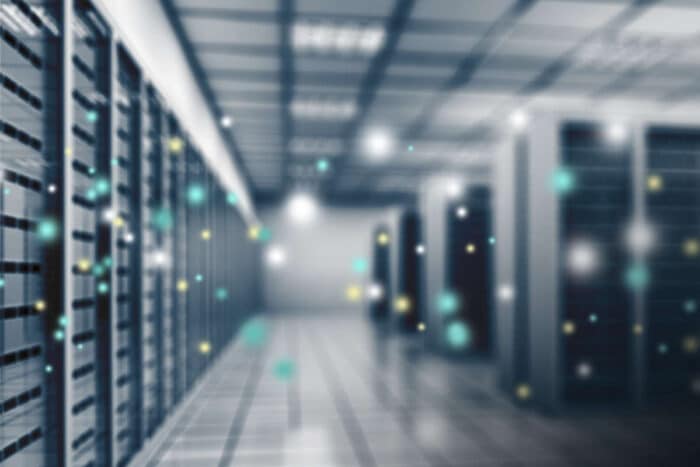Utilities Are the Unsung Heroes of the Data Center Boom

By Emily Newton
The data center boom is in full swing. Buildings full of servers that support cloud computing and artificial intelligence (AI) are growing in both number and scale, but digitalization isn’t the only factor behind this trend. The utility sector has also been central to the movement. Likewise, data centers’ future may lie with utilities.
Inside the Data Center Boom
The current data center boom began around 2019 amid a widespread shift to cloud computing. Cloud setups store data on remote data centers instead of on-premise hardware, so this transition led to more of these facilities. Then, AI began turning heads and pushed things even further.
Between 2019 and 2024, the number of U.S. data centers increased by 17 times, and the size of the largest of these installations saw a 20-times increase. That staggering growth is far from over, too.
Experts predict over $1 trillion will flow into U.S. data centers, with another trillion going toward international facilities. Rising generative AI capabilities keep pushing demand higher. The rush to capitalize on this technology aside, AI video generation takes 10,000 times the computing power of a Google search, requiring more server capacity.
How Utilities Enabled the Explosion of Data Centers
Such a remarkable expansion would never have been possible without data center utilities. That’s because these facilities require significant power and water infrastructure.
Power Distribution
Data centers require a lot of electricity, and the energy industry has responded. U.S. power generation capacity increased by over 37,000 Megawatts (MW) in 2024, and energy storage saw an 11,000 MW bump.
Of course, the data center boom doesn’t account for the entirety of the nation’s rising electrical capacity. But it certainly played a part. In 2019, data centers accounted for 1.9% of total electrical consumption in the U.S., but they consumed 4.4% just five years later.
The simultaneous spikes in power capacity and data center demand are more than coincidental. The current boom was only possible because utility organizations could generate enough electricity and distribute it to these facilities to sustain their growth.
Cooling Infrastructure
Utilities enabled the data center boom through more than just electricity. A midsized facility consumes roughly 300,000 gallons of water daily. That’s as much as 1,000 houses, so this rapid expansion also required a reliable water distribution system.
Many data centers use liquid cooling to keep servers from overheating. Others use airflow but still employ water-reliant cooling towers. In either case, these buildings have tremendous plumbing capacity needs.
Just as with electricity, data center expansion is only possible when large volumes of water can flow in and out of the facility without issue. While plumbing may not be the first thing that comes to mind when thinking about AI, the cloud and AI explosion has pipe infrastructure to thank.
Looking Ahead: How Data Center Utilities Can Evolve
Utilities were the unsung heroes of the initial data center boom, but this trend is not over. As businesses aim to expand this computing infrastructure even further, water and electricity infrastructure must likewise grow to support it. That means evolution in a few key areas.
Microgrids and Modernization
Most notably, electrical utilities must prioritize grid modernization. Power outages are already common as a result of aging infrastructure, and energy demands in 2026 will be more than double 2021’s levels, thanks largely to data centers.
Moving from the large, single grid model to microgrids can help. A microgrid specific to one data center would protect these facilities from outages and other issues with the larger, older national system. It also opens the door to site-specific power generation through solar panels, wind turbines or small-scale fossil fuel plants.
Internet of Things (IoT) connectivity can also help. Smart transformers and similar devices can warn utility providers when the microgrids near data centers experience problems, leading to faster fixes to prevent downtime.
Innovative Plumbing
Likewise, plumbing systems need to grow and modernize to enable further data center growth. Pipes must deliver water to cooling towers efficiently and with minimal waste. IoT solutions can again help here, as they let utilities detect and respond to leaks earlier.
A shift to process piping may also be necessary to transport coolants to key equipment. Liquid cooling systems, which are more energy-efficient than air cooling, are becoming increasingly popular in data centers. Many also use specialized coolants, not just water. Consequently, data center utilities must install and maintain pipes to distribute these materials.
Process piping requires specialized expertise to maintain and implement, so this transition may mean a training shift. Getting ahead of that trend could help plumbing professionals prepare for future demands.
Sustainability
As data centers have grown, their impact on the environment has become harder to ignore. These facilities already generate a tremendous amount of greenhouse gases, and their emissions could nearly double by 2030, which would take a worrying toll on the planet.
Renewables present a better way forward, especially when data centers rely on microgrids. On-site solar or wind power generation may not produce enough electricity for nearby towns, but it could be enough for efficient server infrastructure. Even if it can’t provide all the necessary electricity, on-site renewables could reduce the amount of fossil fuel grid energy data centers need.
Cooling can follow a similar approach. Transporting water from water harvesting sites instead of public reservoirs or installing self-contained hydronic heat pumps to reduce water waste could make data centers more sustainable.
Cybersecurity
Many data center utility upgrades involve advanced technologies like IoT endpoints. As helpful as these can be, they also raise the need for thorough cybersecurity.
U.S. utilities saw a 70% increase in cyberattacks in 2024, and such an incident could cause massive damage if it affects data centers. Consequently, any new water or electrical infrastructure serving these facilities needs security improvements.
Network segmentation to separate IoT systems and minimize lateral movement is a big step forward, as is encrypting all IoT traffic. Real-time monitoring may also be necessary. AI security tools can identify and contain potential breaches almost immediately to stop the damage.
Data Center Utilities May Hold the Future of Technology
The data center boom wouldn’t have reached its current height without reliable utilities. In the same way, the future of these facilities lies with the ability of water and electricity infrastructure to adapt.
Data center utilities face a challenging path forward. However, the industry can rise to the occasion if it recognizes how it must evolve and takes the necessary steps.
Emily Newton is a construction and industrial journalist. She is also the Editor-in-Chief for Revolutionized Magazine. Keep up with Emily by subscribing to Revolutionized’s Newsletter.




